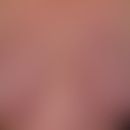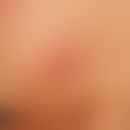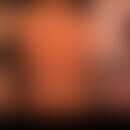DefinitionThis section has been translated automatically.
General therapyThis section has been translated automatically.
Notice! In addition to alleviating symptoms, the treatment focuses on preventing the change of levels
from allergic rhinitis to bronchial asthma! In case of development of allergic asthma, treatment by the internist.You might also be interested in
External therapyThis section has been translated automatically.
Internal therapyThis section has been translated automatically.
- Antihistamines: If local therapy is not sufficient, in acute attacks or prophylactically during the time of pollen flight, additional antihistamines such as desloratadine (e.g. Aerius) 1-2 tbl/day, levocetirizine (e.g. Xusal) 1-2 tbl/day or cetirizine (Zyrtec) 1 tbl/day p.o.
- Glucocorticoids: Only in exceptional cases the pre-seasonal glucocorticoid depot injection in combination with methylprednisolone (e.g.) 80-120 mg is to be used.
- Immunotherapy, specific: Besides the absolute absence of allergens, this is the only therapy approach that can significantly reduce the probability of bronchial asthma. The indication for specific immunotherapy is given in cases of pronounced clinical symptoms (prick test and high RAST class are only indicative, not decisive criteria). Indications may be: increase in respiratory problems from year to year, positive family history of obstructive respiratory diseases, incipient obstructive respiratory complaints during the last pollen count, low age. The indication is also given in the case of inadequate therapeutic effects due to measures of allergen elimination or symptomatic drug therapies as well as high allergen exposure (especially occupational).
Notice! Deterioration or provocation of atopic eczema by specific immunotherapy of allergic rhinitis is possible!
- Extracts are available for house dust mites, pollen and animal epithelia (cat, horse). The efficacy varies for the different allergens: Good chances of success exist with specific immunotherapy against house dust mites (reduction of symptoms in about 90% of cases), moderate chances of success with pollen and doubtful chances of success with specific immunotherapy against animal epithelia.
Cave! Specific immunotherapy for patients with unspecific bronchial hyperreactivity!
In patients with unspecific bronchial hyperreactivity, immunotherapy is associated with the risk of severe asthmatic exacerbations. In these cases, the retention of inhaled glucocorticoid therapy is often the most sensible solution for the patient.
Selection of the allergen: Provocation testing (nasal/conjuctival) is generally recommended for the selection of the allergen and, in the case of specific immunotherapy against several plant groups, is indispensable for the identification of the allergen causing symptoms. More than 4 allergens of one plant group should not be added simultaneously to the hyposensitizing solution. As a rule, specific immunotherapy against a few allergens with the main responsibility also reduces the symptoms of other allergens, as these are also treated by cross-allergenicity.
TablesThis section has been translated automatically.
Allergenicity and effectiveness in allergic rhinitis
Allergen |
allergenicity |
Effectiveness |
Pollen |
Sleeping with windows closed |
+ |
Washing your hair before going to bed | ||
Do not leave clothes in the bedroom | ||
Pollen filter, pollen warning | ||
No physical exertion outdoors during the pollen flight | ||
Fungal spores |
Regular ventilation, especially during the winter months |
++ |
Air circulation even in hidden corners of the apartment | ||
Thermal insulation on the outer wall | ||
House dust mites |
Encasing |
++ |
Reduction of dust traps | ||
Reduction of the air humidity | ||
Fine filter in vacuum cleaner | ||
Acaricides | ||
Animal Epithelia |
Abolition of animals, especially for cat hair allergy |
+ |
Regular washing of the animal if maintained | ||
Thorough cleaning, especially of the upholstery | ||
Other (coffee/rhizinus beans, latex, metal salts, flour, proteins, etc.) |
Attempt to avoid allergens or reduce the concentration of allergens, especially in the workplace |
(+) |
Internal implementation | ||
If necessary, change of profession after dermatological procedures |
Note(s)This section has been translated automatically.
LiteratureThis section has been translated automatically.
- Sennekamp J et al (2002) German Society for Allergology and Clinical Immunology (DGAI) and Medical Association of German Allergologists (ÄDA). AWMF Guidelines Register No. 061/013
- Bachert et al (2003) Guidelines of the German Society for Allergology and Clinical Immunology (DGAI) in coordination with the German Dermatological Society (DDG). AWMF Guidelines Register No. 061/014
Incoming links (10)
Aspergillus flavus; Aspergillus fumigatus; Eosinophilia and skin; Fish allergy; Flour allergy; Immunotherapy, specific, oral, tablet therapy; Latex allergy; Nedocromil; Pollinosis; Rehabilitation, dermatological;Outgoing links (12)
Allergic rhinitis; Antihistamines, systemic; Cetirizine; Conjunctivitis; Desloratadine; Floor change; Glucocorticosteroids; Immunotherapy specific; Levocetirizine; Methylprednisolone; ... Show allDisclaimer
Please ask your physician for a reliable diagnosis. This website is only meant as a reference.




